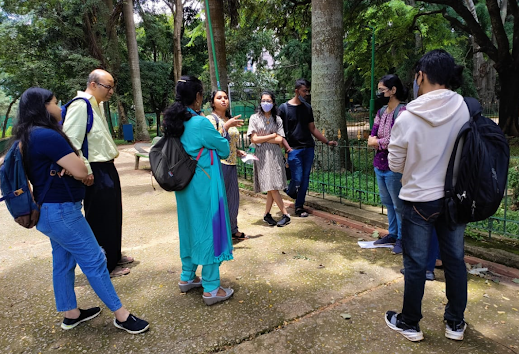“We can no longer let the people in power decide what is politically possible. We can no longer let the people in power decide what hope is. Hope is not passive. Hope is not blah, blah, blah. Hope is telling the truth. Hope is taking action. And hope always comes from the people.” – Greta Thunberg
This is what Eleonora and her group, hailing from Lausanne university, who came to Bangalore to explore water and waste management related projects found attractive in the city: Hope always comes from the people and it’s truly visible here”. They appreciated the active engagement of the community and how the work is being done at the ground level. The engagement of youth in climate dialogue and the urge to take immediate actions is reflected in activism and commitment. Breaking the physical barriers of boundaries to collaborate and engage in understanding the issue of the water crisis in Bangalore, the Lausanne student delegation through the exchange program took this as an opportunity to explore varied dimensions of SDG 06 i.e water and sanitation. When asked by the host; why did you choose India and not any other country for your project? Eleonora responds because India as a developing country has a lot of issues that need consideration and water-scarcity is one of them. As I write this blog on the country's 76th Independence day, eleonara’s statement exemplifies that the first step that comes towards making a progressive state is the acceptance of the problems that exists because with acceptance comes humility and the resolve to solve it. This can prompt us to engage, collaborate and coordinate and find solutions and ways to make our city water-efficient.
Swissnex, a global network connecting Switzerland and the world in education, research and innovation received a batch of interns from Lousanne university who were interested in exploring water related projects in the city. Since Biome has been deeply involved in this domain, the organization volunteered to organize some field visits including Cubbon Park Trail. This walk provided the opportunity for Intern-to-intern interaction as Biome has already been running a program for interns hailing from different states and institutions of the country. Interns at Biome hosted the walk for swissnex student delegation.
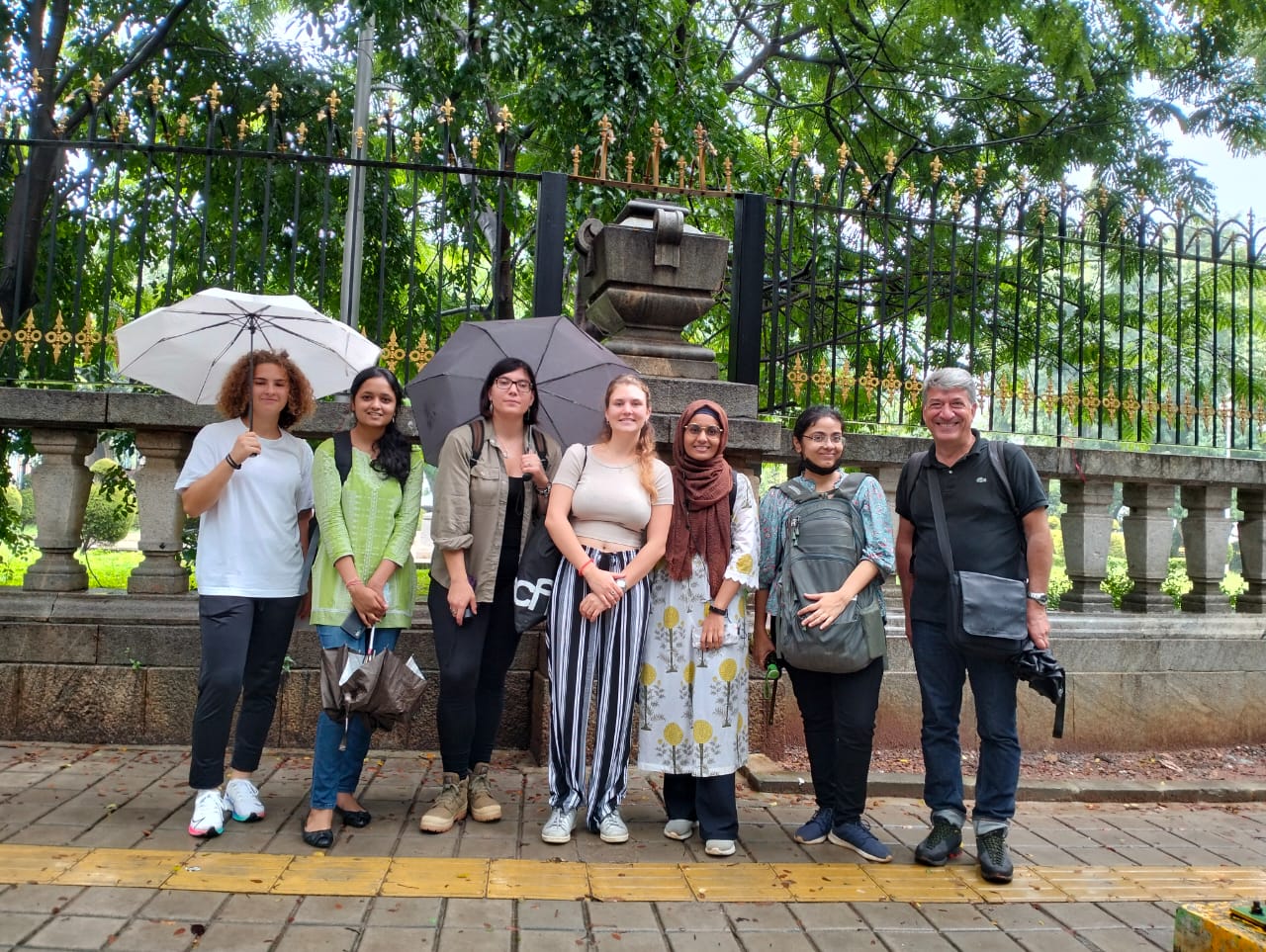
Standing behind the Sir Edward statue inside the Cubbon Park
Intern-to-intern interaction at Cubbon Park Trail
we started our tour at 10:00 am. The plan was to show the Swiss batch the murals depicting water stories of the city and then head towards Cubbon park to see the wells and ponds. We were joined by Elenora, Jennifer, Roxana and their professor Francesco Panese . As the saying goes things don’t always go as planned but it’s when you make a plan out of the unplanned and make the best out of it. It started raining and we couldn’t do our Cubbon park walk. But as we were waiting for the rain to stop we got a chance for more meaningful interactions that went beyond water and included topics like gender equality, domestic violence and others.
Professor Francesco expresses that Switzerland has its own problems. “We might see it as a developed country and standing here we may make comparisons and think that it’s a perfect country but it’s not. We have a lot to work upon when it comes to transition towards sustainable lifestyles and issues like domestic violence and gender equality". Waiting for the rain to stop with our umbrellas, the Swiss batch offered us to come with them for lunch at the swissnex office and then we can come back to visit the park. It took a little while to reach our destination since we couldn't find a taxi due to traffic. Then we decided to walk but struggling to find the location we finally met Mr. Anthony, the driver, arranged for a swissnex student delegation who dropped us at the office. Squeezing into one car, adjusting and laughing made me feel how even first time interactions can become meaningful and joyful when we come together to express shared concerns and objectives.
Cubbon park Metro Station
The batch of interns was fascinated by the project undertaken at the Cubbon park metro station (Namma Ooru Namma Neeru); a collaboration among different entities namely Biome, Art in transit and Srishti school of design. Farha, an intern at biome while navigating them through the interpretation of murals , starts off by giving the context of water-crisis in Bangalore. When told that these murals are made of the mud derived from the wells dug by the well diggers they were mesmerised as they tried to feel it by touching the surface of the walls.

Observing and interpreting the murals at the Cubbon Park Metro station.
Jennifer, elenora, roxana and the professor Francesco at the back capturing the moment.

Girls enjoying refreshing coconut water while it was raining
Invited for a small screening of the experiences of the swiss batch at swissnex office on friday i.e 12th august which were to be followed by a dinner, coincidentally marked the day of International youth day. It’s fascinating to reflect on the potential in the power of youth engagement and activism in solving some of the biggest issues of the 21st century. Reflecting on our interactions while on the way I felt empowered to see how people from different countries, states, educational backgrounds, contexts are tied together with common threads of commitment, compassion and willingness to do something meaningful. This commitment is reflected in Biome’s approach towards empowering well diggers communities and the trust in the city's potential in managing its groundwater resources in a better way. Through our Million Wells campaign we are telling stories of the well diggers communities and connecting people from all walks of life through engagements, workshops, poster design competitions and others so that each and every individual feels a sense of responsibility and commitment in the judicious use of common resources.

“Journey to Bangalore- Lausanne student delegation”
Jacobo starting off the presentation!
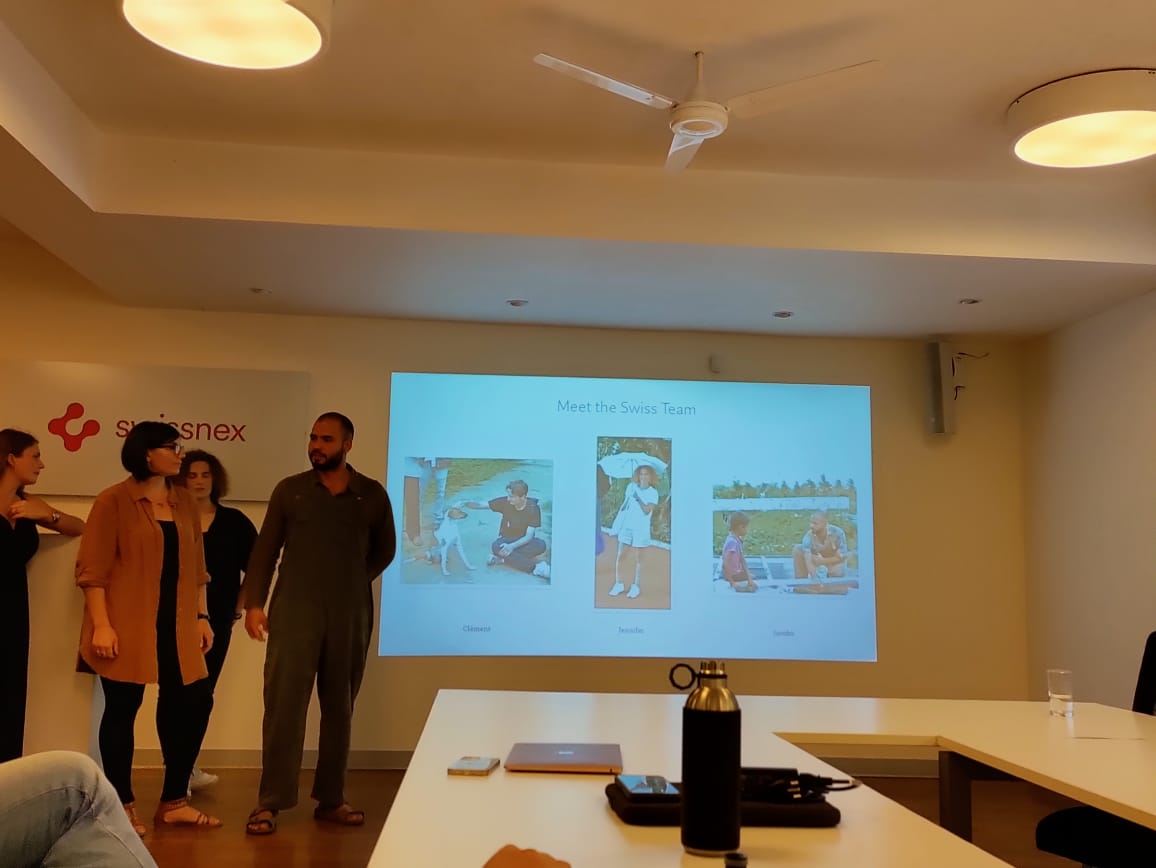
Jacobo introducing the team
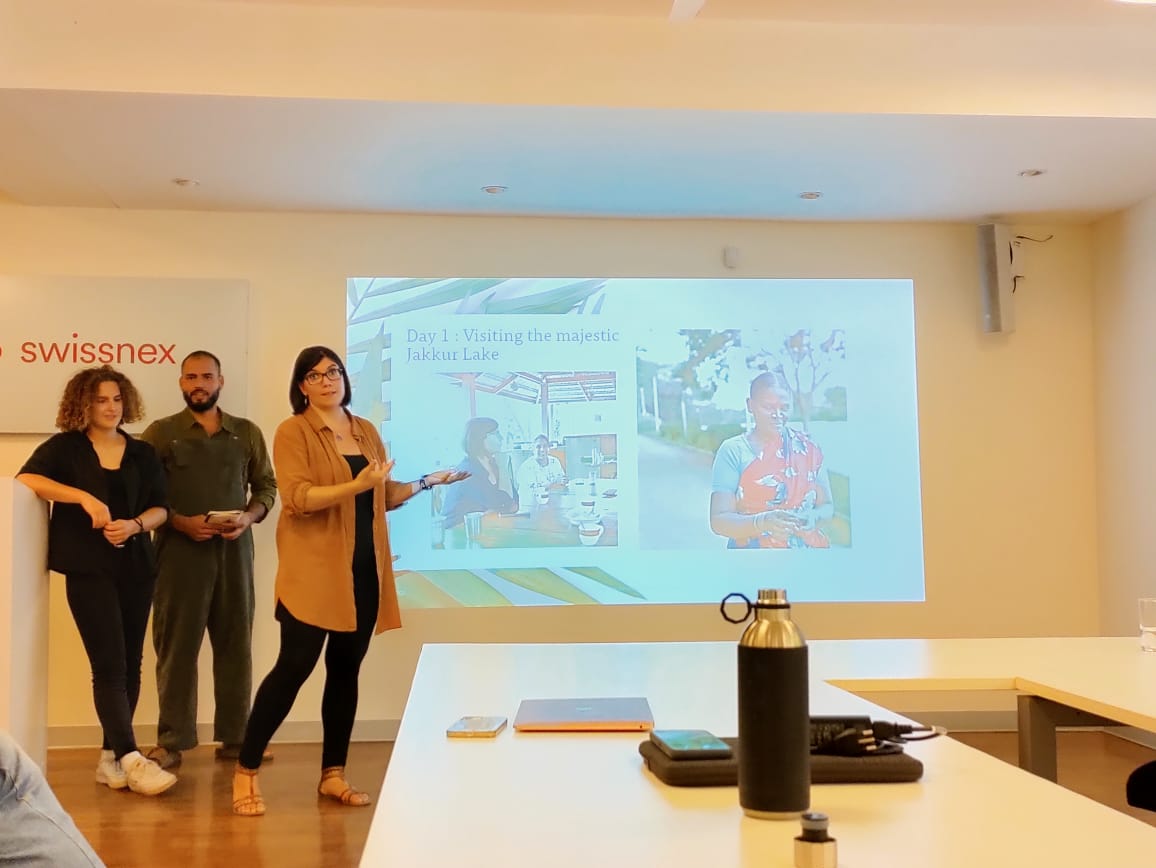
Day 1: Visiting the majestic Jakkur lake:
Roxana sharing the experiences and learnings
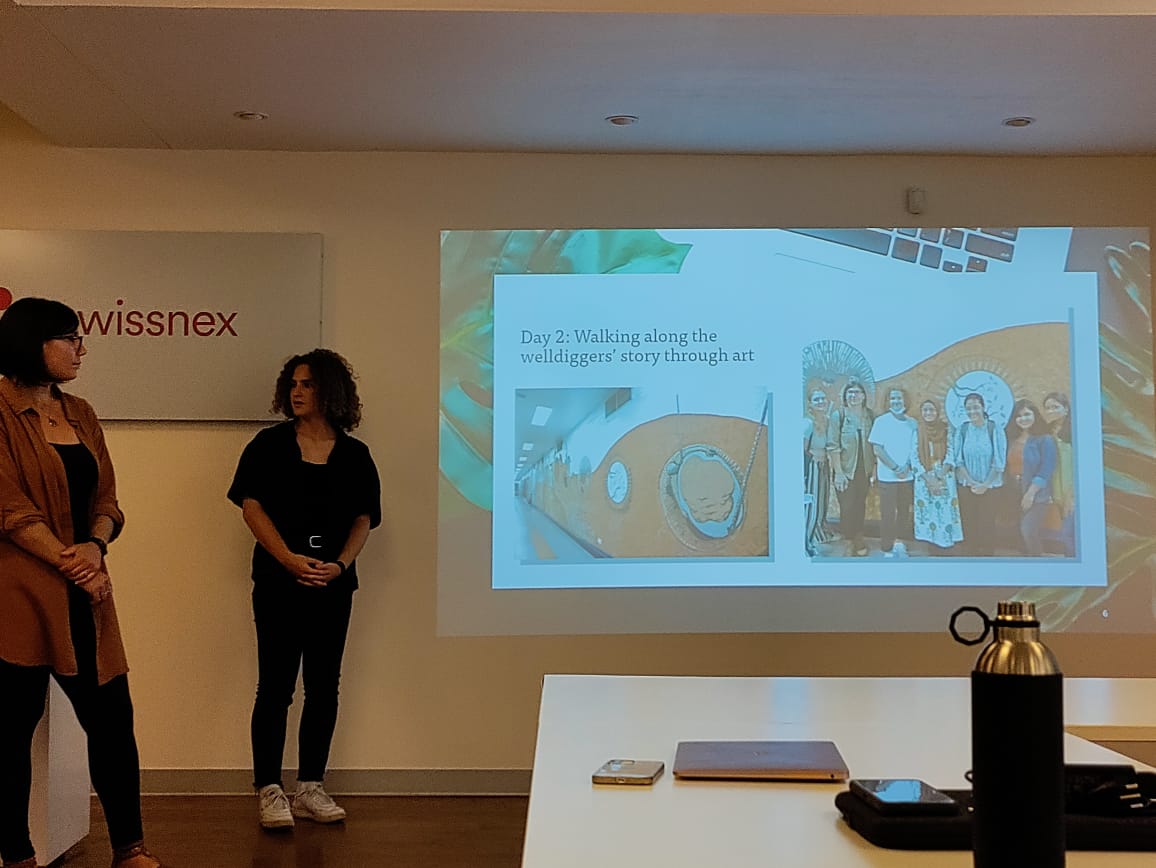
Day 2: walking along the welldiggers’ story through art
Jennifer sharing the experiences and learnings

Professor Francesco emphasising on the need of social innovation
The professor explained how he and other faculty were planning to organize a project that includes field visits. This time they wanted to do things differently. He believes that experiential knowledge is essential in preparing students to work at the ground level. It facilitates in examining their emotions and by engaging students in hands-on experiences and reflections they are better able to connect with the ground realities. Amalgamating academics with experiential knowledge will assist in designing tools and ways that bring in transformational change. Fortunately enough I realized what the Professor had expressed after completing my internship with Biome which made me realize that reality is very different to what we study in our classrooms. Professor also mentioned that talking about climate change and these issues sitting in our chairs in AC rooms is very easy. We have to come out of our comfort zones and expand our horizons to integrate different points of views. Being aware of the repercussions of our modern lifestyle and its negative impacts he consciously says: Switzerland might become the next Bangalore that might face similar water related problems if we do not act immediately. We can learn from cities like Bangalore that are reviving traditional methods of wells and see its potential in replicating in different areas keeping in mind the local context.
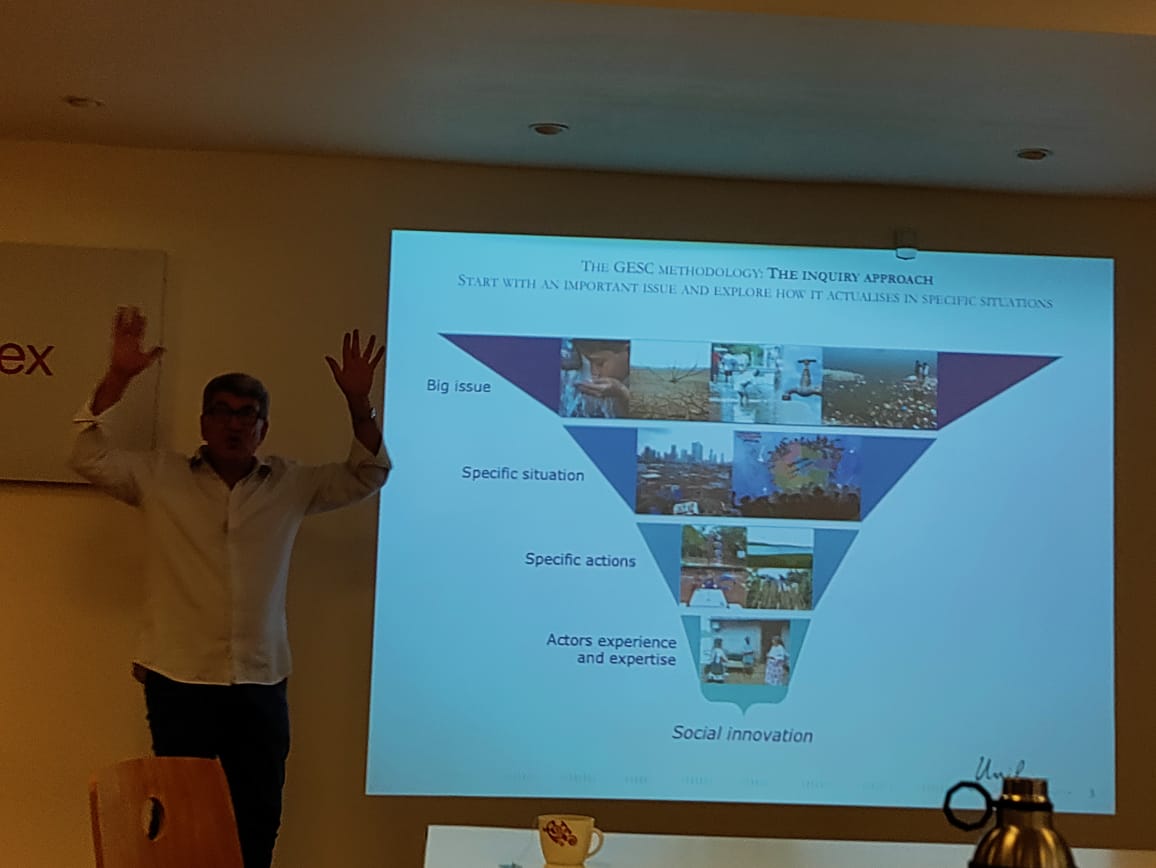
The inquiry approach: explained by the Professor Francesco
‘ Social innovation is the key and answer to many of the problems that we are facing today”. He ended his presentation by thanking all the attendees and entities involved including swissnex and Biome to let them experience the incredible India. He ends his talk by expressing his love for the country and its people who are very friendly. He says: Indeed India is truly incredible. After the presentation we headed for dinner at a Vietnamese restaurant in Indiranagar. People from other organizations also accompanied us including Ishita, a representative of SELCO, Divya, representative of Jhatkaa, campaigning organization and others who have been working diligently towards one of the SDG’s in the city. These interactions and engagements were a learning for us as well as it allowed networking and alternate ways of working towards sustainable lifestyles.
Capturing their key statements:
Eleonora:
Jennifer: It’s really good to see all these organization and people we have come across are “Driven by passion and not profit”
Jacobo: “I was very impressed by this lady (Mariyam) who has been working to recycle waste…”
Roxana: We learned a lot from these visits. These visits allowed to take hold of the ground realities
Clement: I am a person whom you will mostly find in libraries reading books. This was a completely different experience for me. I enjoyed it…
Professor: “We as citizens have to come out of the slumber and become active agents in switzerland. Community engagement and active participation will solve our many problems…”

Farewell dinner with the Lausanne student delegation
Organizations like Swissnex are the facilitators and intermediary in successful implementation of projects that assist in knowledge sharing and exchange of ideas. It helps in connecting like minded entities, promoting research, supporting young enthusiasts to experience alternative ways of learning, preparing them for bigger roles in the job market and the economy. We need to support young minds and their innovative ideas to create a culture of free enterprise.
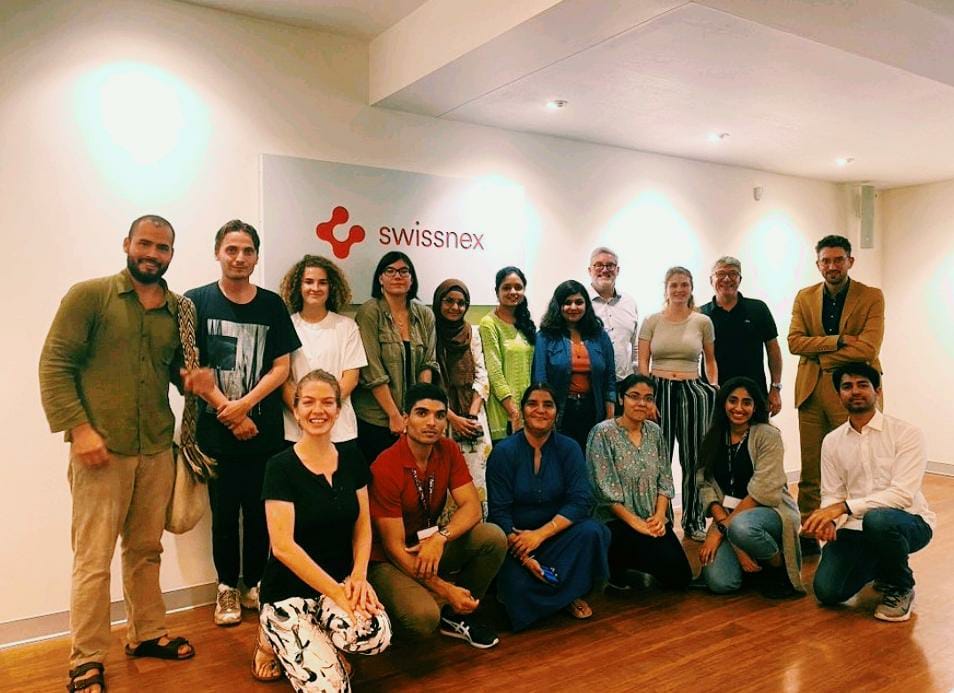
Collaboration is the KEY (Knowledge, exchange of ideas and youth engagement)
Looking forward to more engagements. Biome’s doors are always open for everyone who keeps an intention and interest in learning about and improving the water problems and other relevant issues in the city.



